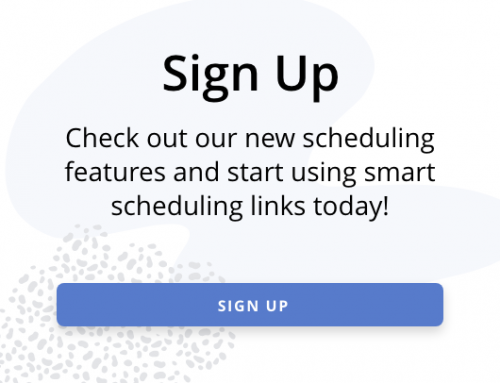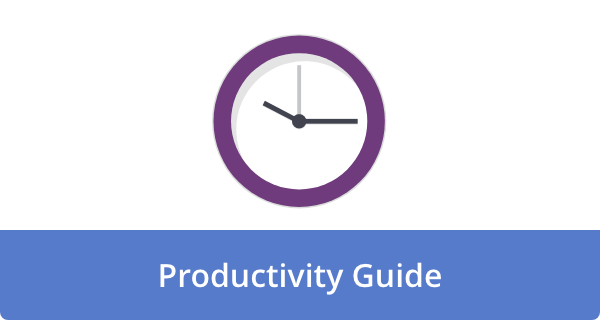

Over the weekend, I met up with a friend for lunch. It would be an hour before he arrived. Thinking that I had enough time to clean the kitchen and take a shower, I suddenly realized I was running late.
Everyone has thought, “This will only take a few minutes,” only to realize an hour later that they’re not on time. Or maybe your to-do list seems impossible to accomplish. This could be a sign of being a time optimist.
How we plan, work, and manage our daily lives is greatly influenced by how we perceive time. By knowing whether you’re a time optimist or a time realist, you’ll be able to make better decisions, reduce stress, and take back control of your life.
What Is a Time Optimist?
Tidsoptimists underestimate how long something takes, and overestimate how much time they have available.
“When planning for certain tasks, time optimists have a tendency to focus on the best-case scenario, and fail to take into account any potential delays or complications,” explains Dr. Sophie Mort, a mental health expert at Headspace and clinical psychologist.
Time optimists possess the following traits;
- Overcommitting. They say yes to more than they can handle, confident they’ll “fit it all in.”
- Last-minute rushes. They delay until urgent situations develop, believing there is still plenty of time.
- Overloaded to-do lists. Their lists are based on ambition, not reality.
- Surprised by delays. Although they are accustomed to underestimating, they are puzzled when they fall behind.
Often, time optimists are driven and enthusiastic. Unfortunately, their optimistic bias means their plans don’t correspond to the available time.
What Is a Time Realist?
When planning, a time realist accounts for setup, fatigue, and life’s interruptions.
To estimate time effectively, you must remove your feelings from the equation, says Julie Morgenstern, a productivity and time management expert. Rather than relying on wishful thinking, you need to take a more quantitative approach to determining how long things take you.
Those who are time realists often:
- Schedule buffer time into their schedules.
- Don’t rush through tasks.
- They rarely run late or overbook.
- Feel less overwhelmed and more in control.
Time realism is not pessimism; it is accuracy. Realists know the “quick email” may take 25 minutes, so they plan accordingly.
Why This Difference Matters
If you’re a time optimist, your days are often filled with rushing, running late, unfinished work, and self-blame. Even though you’re constantly busy, you aren’t always effective.
Meanwhile, time realists prioritize fewer tasks and accomplish them with less stress. Because of this, they don’t take on too much, and they don’t rely on last-minute heroics.
Perception and reality can be at odds, resulting in;
- Missed deadlines. In turn, this delays projects and frustrates colleagues.
- Burnout. Physical and mental health suffer from the constant feeling of being behind.
- Poor work quality. Often, rushed work is sloppy, leading to errors and rework.
- Damaged credibility. Being consistently late or failing to deliver on time undermines the trust of colleagues, clients, and even family members.
- Decreased confidence. When you overestimate and under-deliver, your self-esteem can suffer.
First, you must recognize your time perception bias to improve how you plan and execute your day.
The Psychology Behind Time Optimism
In light of the clear downsides, why do so many intelligent, driven people fall into the time optimist trap? Human psychology has deep roots:
- The planning fallacy. According to Daniel Kahneman and Amos Tversky, we are prone to underestimate the time it will take to complete a future task, even when we have a history of similar tasks taking longer. Most of the time, we focus on the ideal path to completion, ignoring potential obstacles or unforeseen delays. Rather than a personal failing, it’s a universal human tendency.
- Wishful thinking. As humans, we’re often optimistic. We want things to be quick, easy, and efficient. When we desire ideal conditions, we make plans based on unrealistic ones. Our desire for speed and seamless execution often overrides the messy reality of daily life: traffic jams, distractions, fatigue, and technical glitches.
- Poor memory of past tasks. Our brains are surprisingly good at forgetting tedious, slow, or messy middle parts of functions. In most cases, we remember the start and the end, but the hours of focused effort, the unexpected problems, or the interruptions fade away. As a result, tasks appear to be completed faster than they actually are.
- Identity and self-worth. Some people associate their identity and self-worth with being busy. A full calendar can seem like a badge of honor, an indication of importance, or a justification for their existence. If they admit they need more time or that a task is more complex than anticipated, they may feel weak or inadequate. Overcommitment may be influenced by psychological pressure.
Signs You Might Be a Time Optimist
You can assess your own time perception by asking yourself these questions;
- How often do I underestimate the time it will take me to accomplish something?
- Are my meetings and tasks often back-to-back, leaving no breathing room?
- How often do I run late for appointments, reschedule commitments, or consistently postpone tasks?
- Even when I put in long hours and work diligently, I often feel behind schedule or overwhelmed.
You’re likely a time optimist if you answered yes to most of these questions.
Becoming a Time Realist: 8 Practical Strategies
The good news is that time realism can be cultivated. By training yourself to assess time more accurately, you won’t lose drive, ambition, or positivity. In reality, it’s all about grounding your enthusiasm.
To improve your planning, here’s how you can shift your perception:
Keep track of your time honestly.
Track how long your tasks take for at least one week — or longer if possible. Use a time-tracking app (such as Toggl, Clockify, or even a spreadsheet) or a journal to keep track of your time. Rather than shaming yourself for past mistakes, the goal is to learn your real patterns of work and interruptions.
By knowing how long something will take you, Morgenstern says, it will be easier to find the time to complete it. In some cases, it may be better to delegate the duty to someone else, reduce the duty to achieve a better return on investment, or eliminate the duty altogether.
Add a 25–50% buffer to everything.
As soon as you have some data, or as a starting point, include a realistic buffer. If you estimate that something will take 30 minutes, block 45 minutes to account for potential delays. For every hour of focused work, allow 15–20 minutes for interruptions, mental fatigue, or unexpected issues that may arise. The buffer is your insurance policy against the planning fallacy.
Use the “Big 3” rule (or “Top 1-3”).
To avoid becoming overwhelmed with your to-do list, identify your one to three most important tasks for the day instead. Concentrate relentlessly on completing them. Any other accomplishment is a bonus. As a result, you are forced to prioritize and do not feel scattered.
Time-block your calendar.
Don’t just schedule meetings. Schedule specific times for focused work, personal tasks, exercise, meals, and even short breaks. By visualizing your entire day, you can see where your time is allocated and prevent overscheduling. These time blocks should be treated as non-negotiable appointments.
Plan for transitions.
Time between tasks is often overlooked. When switching from one project to another, or between work and errands, include transition time between meetings. If you take even five minutes to reset, get some water, or mentally shift gears, you can prevent a cascade of delays and reduce mental fatigue.
Use past data.
To estimate the time it will take to complete a task, recall the last time you finished something similar or review your calendar analytics. Use that actual experience as your basis for your estimate, not your idealized, optimistic prediction. As a result, you have more realistic expectations and can learn from your own experiences.
Accept trade-offs.
Don’t forget that accepting a new commitment implies denying something else. Scheduling five hours of tasks into a three-hour window will inevitably lead to something being neglected. Decide what matters most, letting go of the rest without guilt, and learn to say “no” (or “not now”).
Review and adjust weekly.
Make it a habit to reflect on a weekly basis. Each week, look back and ask yourself: What did you underestimate? Where did you veer off course? What unexpected events happened? You can use that insight to refine your planning for the next week. Over time, time realism can be built and improved continuously.
Why Time Realism Is a Superpower
By becoming a time realist, you’re not less ambitious or slower-you’re more effective. When your plans match reality, you can:
- Feel like you’re in control. Suddenly, you no longer feel like you’re always behind, but instead feel in control.
- Experience fewer last-minute emergencies. With proactive planning and buffers, frantic rushes and crises are less likely.
- Build trust with yourself and others. By consistently meeting your commitments, you establish credibility and reliability.
- Create space for creativity, rest, and real progress. When you don’t overstuff your schedule, you can devote more mental energy to deeper thinking, rejuvenation, and meaningful advancement.
Overall, instead of living in a fantasy schedule, you operate from a place of clarity and confidence.
You Can Still Be Aspirational—Just With Guardrails
Time realists aren’t boring. They still have goals, passions, and dreams, but they just plan like adults. They know that a great day isn’t packed from minute to minute — it’s focused and free.
If you are naturally optimistic about time, you don’t have to change your personality. You just need a better scaffolding for your energy. Time realism does that: it frames your ambitions.
Final Thoughts: It’s Not Just About Time—It’s About Trust
Time habits are a reflection of your self-confidence.
It’s not that time optimists don’t try, but rather that they’ve made promises that they can’t keep (to themselves or others). Realists make fewer promises, but they deliver.
Do you want to feel less overwhelmed and more productive? Be honest about the time it takes to get things done. Using that truth as your guide, build your days.
It’s not glamorous, but it’s one of the most effective productivity shifts you can make.
FAQs
What is the planning fallacy, and how does it affect daily life?
It’s a bias where we underestimate the length of time tasks will take, despite past experience. The result is overbooked calendars, missed deadlines, and constant rushing.
Is being a time optimist always bad?
No. Time optimists are passionate and motivated. However, unchecked optimism can lead to overcommitment and burnout. In planning, optimism and realism must be balanced.
How can I track my time if I’m easily distracted?
Use simple tools, such as Toggl or a notebook. Jot down the start and stop times. Learn from patterns, not perfection.
Will becoming a time realist make me less productive?
Not at all. You’ll accomplish more (with fewer errors, greater focus, and better follow-through) if you achieve this.
What’s the first step to becoming a time realist?
For one week, track your time. It’s easier to build good habits, prioritize correctly, and design an effective schedule when you understand how long things take.
Image Credit: Tima Miroshnichenko; Pexels











John Rampton
John’s goal in life is to make people’s lives much more productive. Upping productivity allows us to spend more time doing the things we enjoy most. John was recently recognized by Entrepreneur Magazine as being one of the top marketers in the World. John is co-founder of Calendar.